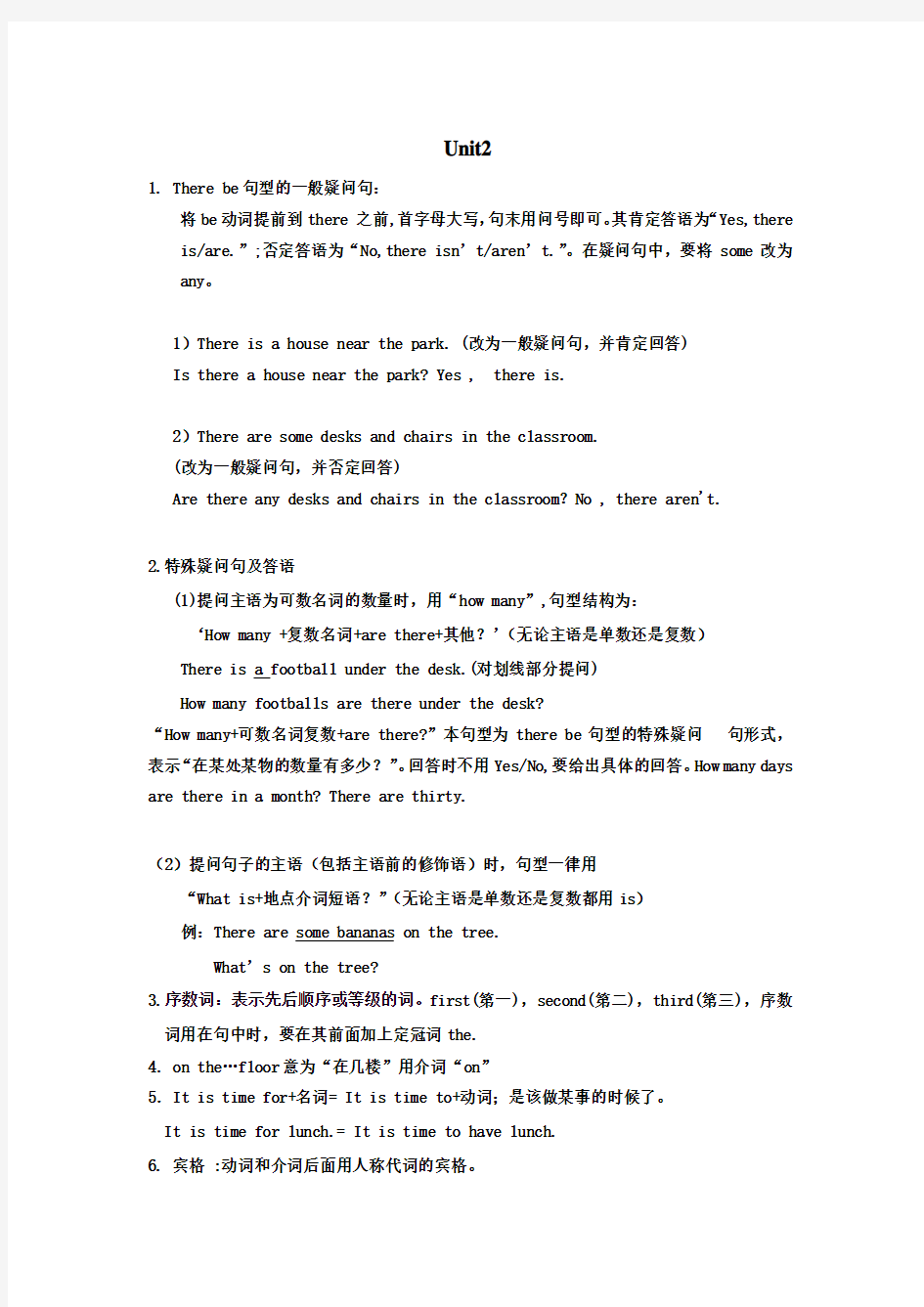新牛津译林版5A 1-4单元语法知识点归纳


Unit1
1.There be句型表示“某处有某物”,be动词用is还是用are遵循下面的原则:
①be动词后面如果跟的是单数名词或不可数名词,就用is;
There is a pencil case in the school bag.
There is some soup/milk /tea/coffee/juice/water/chocolate.
② be动词后面如果跟的是可数名词的复数,就用are.
There are some desks in the classroom.
③be动词后面如果跟的是不止一种物品,就根据离它最近的物品选用is或are.(就近原则) There are some pictures and a telephone.
There is a telephone and some pictures.
2.There be 句型的否定形式:在be动词的后面加not(is not可以缩写为isn't,are not 可以缩写为 aren't)把some 改成any。
例:There is a pencil in the pencil-box.(改为否定句)
There isn't a pencil in the pencil-box.
There are some crayons on the desk.(改为否定句)
There aren't any crayons on the desk.
3.“some”和“any”都有“一些”的意思.“some”一般用于肯定句,“any”用于否定句
和一般疑问句。但在一些表示委婉请求,想得到对方肯定回答的疑问句中,也用“some”. 例:1.There are some watermelons in the basket.(肯定句)
2.There aren't any birds in the tree.(否定句)
3.Are there any toy trains on the table?(疑问句)
4.Would you like some tea?(表委婉请求)
4.can在否定句中的用法:表示某人不能做某事时,通常在can后面加否定词not,注意not 一般与can连写,也可缩写成can’t.后面加动词原形。
Bobby cannot(can’t) see any cakes in the fridge.
Unit2
1. There be句型的一般疑问句:
将be动词提前到there 之前,首字母大写,句末用问号即可。其肯定答语为“Yes,there is/are.”;否定答语为“No,there isn’t/aren’t.”。在疑问句中,要将some改为any。
1)There is a house near the park. (改为一般疑问句,并肯定回答)
Is there a house near the park? Yes , there is.
2)There are some desks and chairs in the classroom.
(改为一般疑问句,并否定回答)
Are there any desks and chairs in the classroom?No , there aren't.
2.特殊疑问句及答语
(1)提问主语为可数名词的数量时,用“how many”,句型结构为:
‘How many +复数名词+are there+其他?’(无论主语是单数还是复数)
There is a football under the desk.(对划线部分提问)
How many footballs are there under the desk?
“How many+可数名词复数+are there?”本句型为there be句型的特殊疑问句形式,表示“在某处某物的数量有多少?”。回答时不用Yes/No,要给出具体的回答。How many days are there in a month? There are thirty.
(2)提问句子的主语(包括主语前的修饰语)时,句型一律用
“What is+地点介词短语?”(无论主语是单数还是复数都用is)
例:There are some bananas on the tree.
What’s on the tree?
3.序数词:表示先后顺序或等级的词。first(第一),second(第二),third(第三),序数词用在句中时,要在其前面加上定冠词the.
4. on the…floor意为“在几楼”用介词“on”
5.It is time for+名词= It is time to+动词;是该做某事的时候了。
It is time for lunch.= It is time to have lunch.
6. 宾格 :动词和介词后面用人称代词的宾格。
